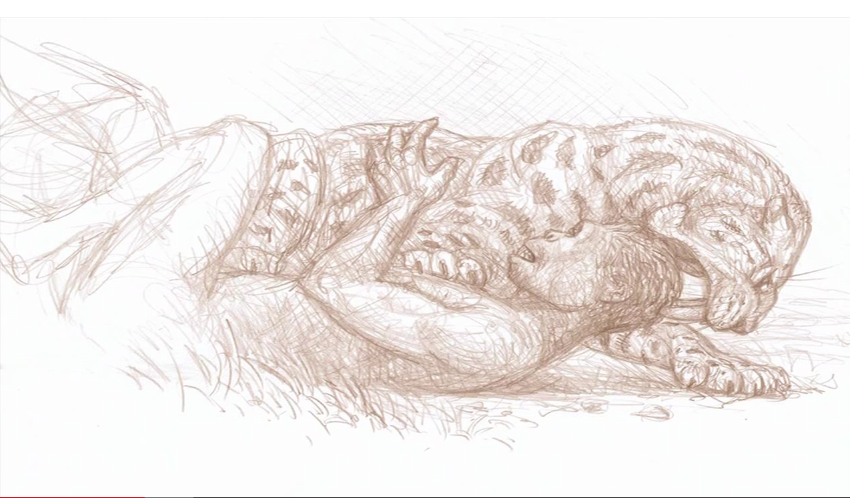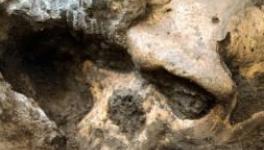Dmanisi Discoveries Suggest Simpler Human Lineage
Newsclick speaks to Satyajit Rath from the National Institute of Immunology about the recent report that has come out on the 2005 excavations at Dmanisi, a small town in southern Georgia where certain well preserved skulls were found. After eight years spent studying a 1.8-million-year-old skull uncovered in Dmanisi, scientists have made discoveries that suggests simpler human lineage.

Transcript:
Prabir Purkayastha (PP): Hello and welcome to Newsclick. We have with us Dr. Satyajit Rath from National Institute of Immunology and we are going to discuss the report that has come out of the 2005 discoveries in the Dmanisi area where they had found a certain very well preserved skulls and the conclusions thereof. It's being argued that this really changes the way we should look at human lineages and how we had categorised them earlier. And this seems to show there are much less number of lineages than we have assumed earlier. How does that square up?
Satyajit Rath (SR): This entire recent event underlines something that I think we should keep in mind when we talk about scientific discoveries and theories, which is the less you know about something the more significant every new discovery seems to be. The more you know the less significance the same discovery may have. This is particularly applicable to this field of, let us say Palaeoarchaeology. The material to base guesses on is very little. You find part of a skull somewhere; you find one bone and on the basis of the shape, the size, the arrangement, you make guesses about what our lineage ancestors looked like. This is not to suggest those guesses are wrong. Simply to suggest, these guesses based on relatively scanty facts and in that sense that this Georgian discovery in Dmanisi carry significance. So what seems to be the case is this is a place in which carnivorous animal... the image of a sabre tooth tiger killing hominids irresistibly comes into mind... carnivorous animals were using some part of these caves as a place to drag prey and eat. So there are all sorts of bones including hominid meaning human-like bones. And as part of that there are five different skulls in various stages of completeness and preservation. And all five by dating seem to be fairly close to each other in time. So it is reasonable to say that over some few centuries carnivorous have killed, and eaten and left these remnants. A simple interpretation from that is that they are all the same species and yet their variations are enormous. That's one point. The second point is the one complete skull that you are referring, the one relatively complete skull and along with what appears to be it's lower jaw bone shows an extraordinarily mixed set of features. The small brain case looks like a pre- homogeneous of hominids – Australopithecus. But many features of the facial structures look as if they belong to the genus Homo which is later and closer to us than Australopithecus. These combinations and the diversity amongst the five skulls together has led the investigators to suggest that what we've been thinking of in these scattered way across Asia and across Africa the many different skulls and skeletons found over these kinds of periods... Remember we are talking about this find dated back to about 18 lakh years ago.
PP: 1.8 million years back.
SR: It is possible, the investigators are suggesting, plausibly that what we are thinking as multiple species of the genus Homo, we are Homo sepians, there are multiple hominids species postulated may not actually have been multiple species. May all be intra-species variations. Just different people with different skull shapes, bone shapes, and so on and so forth. Interestingly, they do this on the basis of a three-dimensional computer reconstruction and as soon as you do that you bring all the explicit and implicit approximations in those modellings as major potential confounders into the analysis. But if you do that and if you accept the reconstruction at face value for the moment, then the variation in all of these skull types is not more than the variations in the present-day humans or the present-day chimpanzees. And is less much than the variations in the present-day humans and the present-day chimpanzees. As a matter of fact, is much less than the variation between a lineage of chimpanzees very closely related to classical chimpanzees namely the bonobos. So bonobos and chimpanzees are both the species belonging to span and apparently, apparently I say because of modelling confounders, their distinctions are greater than the distinctions found in these collections. All of these leads plausibly to thinking that may be there weren't as many different branches of the proto-human lineage as we have been used to thinking.
PP: Now, the other interesting part of it is it's a fairly complete skull as you said there are other skulls in that find. But, it is also very early coming out of Africa that it does show that our pre... our ancestors if you will, came out of Africa much earlier than we thought.
SR: This is not after all the first find of that period of hominid remains outside Africa. There have been others. Clearly, there have been multiple emergences of proto-human lineages out of Africa starting from a couple of million years ago to most recently about between 100 to 200 years ago. How many of these were different species is the question that is therefore being addressed. There is something that we remember in all these. We are making guesses from bones. But what exactly do we mean by species and the short answer in every school text book of biology is that species... so two individuals belong to the same species... if they belong to separate sexes, if they mate, they produce fertile offspring. That's very functional definition of species. Any extrapolation we make about speciation from these bones is never going to be confirmatory. And in this context, let me remind you of an older conversation in this field. But from a slightly different point of view. When the Neanderthal genome was sequenced, it turned out that our contemporary human DNA clearly had footprints of the Neanderthal genome. Now, we tend to think of the Neanderthal as a separate species. We have done so for a very long time. If they were a separate species, how did their DNA get it into our DNA. If their DNA got into our DNA, then Neanderthals and true humans must have bred together and produced fertile offsprings from whom presumably we have descended in some fashion. Under those circumstances, the notion of species is being used with extraordinary uncertainty and elasticity in all these conversations.
PP: So we are not using what we have used in other folks. Shall we say other mammals. We are not using the same standards when it comes to Neanderthals, Homo sapiens, and also the other ones the third...
SR: The Denisovans.
PP: Denisovans. There also we've found genetic remnants in our DNA. So all three have interbred but we still tend to consider them as if they're independent species.
SR: I think it's much more interesting for us to begin to look at the extraordinary diversity that hominid lineages have had over the past couple of million years and it says something interesting about ours. It's quite probable, it is no surprise either to statisticians or to biologists, but it bares saying, it is quite probable that we are an accidental sub-lineage that survived rather than there being a notion of progressive evolution in some fashion.
PP: There is some substance to that because genetic diversity within the human species would tend to show that we came very close to extinction because variation is so little. It said that 7 billion human beings have genetic diversity which is less than a tribe of a herd of baboons in Africa. So that's the degree of close of extinction that we must have come to. Is that be right?
SR: Somewhat overstated I suppose. But I think that's a reasonable extrapolation to make at least. However, there is a feature of these skulls in the Georgian excavations that has gone unremarked upon, at least not been remarked as much as what we have been talking about so far. And that is, the fact is that one of these skulls appears to be that of a very elderly male. And the skull of this very elderly male is almost entirely toothless. It means a male that has not had his teeth for a fair length of time survived 1.8 million years ago. Consider what that says about the formation of social structures and communities. These are guesses that we are making. These are guesses that I am implicitly proposing. But all said and done as we have just discussed, the speciation issue is also mainly guesses. And here is a guess about how old our humanness might be, that we may have had... our proto-ancestors may well have had social structures that involved chewing food for and keeping alive that most biologically useless of species members, namely an elderly non-breeding male.
PP: So this whole argument that tooth and claw evolution, survival of the fittest in human society, which is what underlines a lot of neo-liberalism capitalism as ethos, would then be controverted by a 1.8 billion years skull. Even though one could argue that there is this evidence also rather sparse, but nevertheless it seems to be quite credible.
SR: At the least, it gives us something interesting to think about.
PP: On that note, we will close this discussion and come back when we find new and more sparse finds. Thank you very much.
Get the latest reports & analysis with people's perspective on Protests, movements & deep analytical videos, discussions of the current affairs in your Telegram app. Subscribe to NewsClick's Telegram channel & get Real-Time updates on stories, as they get published on our website.
















